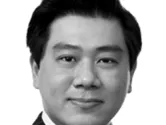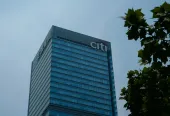A quick guide to shifting from investing to trading
By Vito HenjotoThe mentality for investing is extremely different to the mentality for trading. When traditional investors shift to trading, this can become an issue:
- Investors invest in the value and potential of the company, , more so than monetary value
- Traders care about monetary gains; they will buy or sell the market according to the current condition.
- The concept of short selling the market is foreign to investors.
- Leverage is also a new arena for some
In trading, market risk is influenced by time frame and trading time. The longer a position is open, the larger the risk and gain is.
In general, there are three types that traders fall into:
Intraday trading (one minute – one hour chart):
- Normally holds a position within a day
- Typically has a smaller risk/reward expectation (10 – 50 points of market movement per position)
- Often hold multiple positions during the day (3-20 positions on average, often on the same instrument)
- Rely on multiple positions to make up for the lack of gain potential Often constantly monitor trades while the position is open
Swing Trading (one hour - daily chart):
- Typically hold a position one day - one week
- Typically has a higher risk/reward expectation (30-150 points of market movement)
- Normally makes limited entries (1-5 positions on average across several instruments)
- Higher quality trades, with less time spent looking at the markets
Position trading (daily - monthly chart):
- Often hold a position one week - several months; holding a trade for several months is rare, but can happen
- Generally a high risk/reward expectation (100-3000 points of market movement)
- Submit limited volumes of entries (typically one position/ instrument over a period of time)
- Generally more reliant on trade quality, open, set and leave type of trading.
Why might an investor look at becoming a trader?
An investor might decide to explore trading because:
- They wish to diversify their portfolio
- They have been encouraged by trading success stories
- They look for the convenience and flexibility of the 24 hour market
- Greater liquidity
- They find the speed of trading more exciting
- They look for shorter periods to get more substantial gains
The belief that considerable gains can be achieved in a shorter time frame leads many traders to start their trading journey trading very short term intraday. The time frame selection is often derived from internet, media, and book research, replicating what most traders with experience in the market do.
There is a common misconception that staying a short while in the market is safer. In reality, quick trades require rapid decision-making, market analysis, and opening/closing a position. This is learned through years of experience in analyzing the market through fundamental and/or technical analysis.
Because many traders try and execute trades within this short time frame, they often fail at their first attempt to trade.
Over time, most traders evolve into swing traders and then start to experience more success. They build their understanding of the mechanics of the market and how breaking economic news can impact the market, as well as improving their technical analysis and charting skills.
Some return to short term trading with their newly gained experience, but most stick with what works best for them.
The other misconception is the belief that FX, CFD and Futures trading allows you to trade any market at any time without being constrained by market hours and liquidity.
Whilst largely true, a financial instrument is still bound by its respective market hours, where the majority of the traders who trade it participate in the market.
There are three major trading sessions; Asia, Europe and North America. The best time to trade the market is when at least two of these markets are open and overlapping. Volatility and liquidity in the market is derived from high impact economic news and size of market participants.
When two open markets overlap, there are more high impact news releases as well as more market participants; these two factors provide more liquidity and volatility in the market.
For example EUR/USD and the GBP/USD are best traded during the European and Tokyo Market Overlap, a brief pause when Tokyo goes offline and activity picks up again when European and North American Market Overlaps.
The best time to trade Equities and Index Futures is during their respective Market Open. E.g. DAX during the European session and AUS200 during the Australian markets open.




















 Advertise
Advertise










